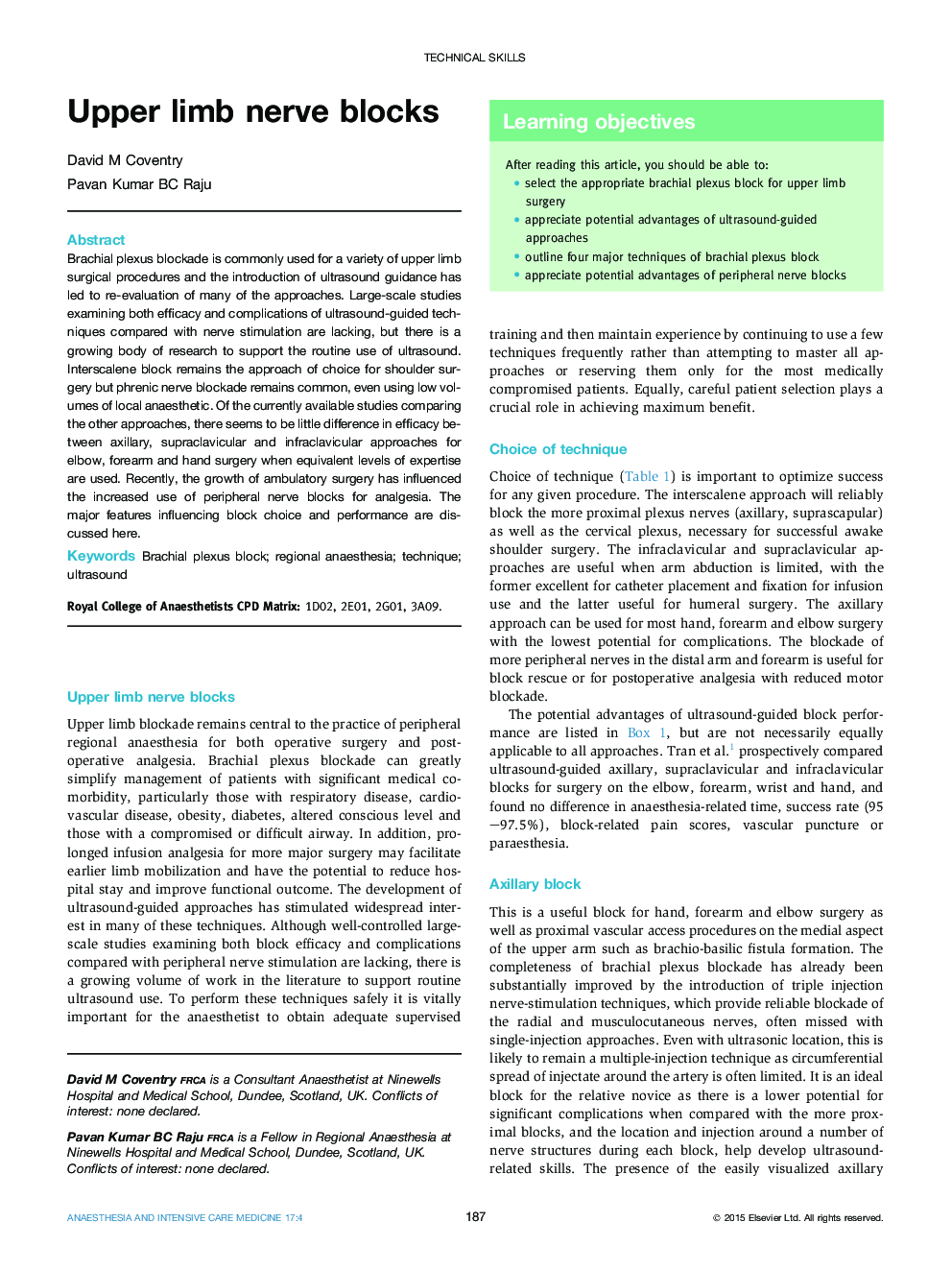| Article ID | Journal | Published Year | Pages | File Type |
|---|---|---|---|---|
| 2742100 | Anaesthesia & Intensive Care Medicine | 2016 | 5 Pages |
Brachial plexus blockade is commonly used for a variety of upper limb surgical procedures and the introduction of ultrasound guidance has led to re-evaluation of many of the approaches. Large-scale studies examining both efficacy and complications of ultrasound-guided techniques compared with nerve stimulation are lacking, but there is a growing body of research to support the routine use of ultrasound. Interscalene block remains the approach of choice for shoulder surgery but phrenic nerve blockade remains common, even using low volumes of local anaesthetic. Of the currently available studies comparing the other approaches, there seems to be little difference in efficacy between axillary, supraclavicular and infraclavicular approaches for elbow, forearm and hand surgery when equivalent levels of expertise are used. Recently, the growth of ambulatory surgery has influenced the increased use of peripheral nerve blocks for analgesia. The major features influencing block choice and performance are discussed here.
